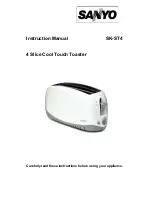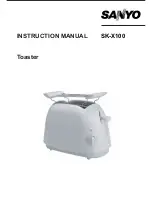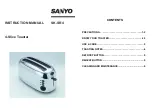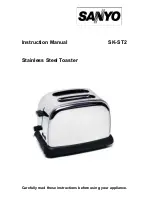
11
EN
• Carefully clean the appliance after all use of all residues of processed food.
Incorrect cleaning or neglect of cleaning results in reduced equipment safety
and service life.
• Before cleaning, disconnect the appliance from the power supply and allow it
to cool down sufficiently.
Warning!
• Do not immerse the appliance (even in part) in water or other liquid.
There is a risk of electric shock! There is a risk of damage to equipment or
other property damage!
• If any safety component (mechanical, electrical) is part of the device, never
disable this part/component! If the safety component/part is damaged or not
working, do not use the appliance!
• Never underestimate the potential hazards and take extreme caution !!!
Instructions for cleaning the surfaces of parts and components of food
contact devices
• The appliance must not adversely affect the quality and properties of the food
while using it; therefore, it is necessary to regularly and thoroughly clean all
surfaces that come in contact with the processed food.
• Once the appliance has been used, it is always necessary to clean all parts of
it from the food residue. It is important to thoroughly clean the surfaces from
the residues of burners and possible greasy deposits.
Follow these steps:
• Disassemble (depending on the type of appliance and the manufacturer‘s
instructions) parts and components that are individually washable either
directly under running hot water or can be immersed in warm water where
appropriate detergent is added.
Otherwise, clean the unit in assembled condition.
• Carefully remove any visible parts of the food from all parts of the appliance
(parts of the food processor).
• It is a good way to use all areas with a dry paper towel. Do not use abrasive
cleaners and metal utensils for cleaning.
• Areas designed to prepare food and contaminated surfaces with adequate
pressure, but thoroughly use a cleaning sponge soaked in warm water and,
if necessary, a small amount of detergent, and remove all food and grease
residues.
• Apply the cleaned area of parts and parts of the appliance using a soft sponge
or cloth soaked in clean, warm water. Be careful not to get water into the
electrical parts of the appliance.
• Repeat this procedure as necessary to remove any detergent residue.
• Always dry thoroughly with a soft cloth or paper towel, or allow it to dry.
• It is important to clean the device (parts and components intended for contact
with food) because food residues tend to be subject to a rotting process and
thus contaminate unsafe foods when they are processed.

































